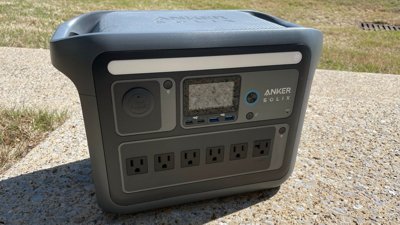Apple chief financial officer Luca Maestri has sold a batch of shares for $16.9 million on Wednesday, an SEC filing reveals, performed as part of an arranged trading plan.
Maestri performed two sales of Apple shares on August 17, the Securities and Exchange Commission filing states. One transaction was for 66,390 shares, sold for $174.66 each, while the other was 30,345 shares fetching $175.60 apiece.
A total of 96,735 shares were sold by Maestri on that day, and it was reported to the SEC two days later by Maestri's "attorney-in-fact," Sam Whittington.
The sale, reported by MacRumors equals a hefty amount of Maestri's total ownership of Apple shares. Following the second sale, Maestri still has 110,673 Apple shares in his portfolio, worth over $18.9 million as of Apple's $171.52 share price on Saturday night.
Though observers may try to read some insight into Maestri's timing for the sale, the way it was conducted prevents any analysis of Maestri's opinion of the company's future fortunes.
As the CFO, Maestro has to be seen to be above board, and following insider trading laws, Maestri pre-arranged a trading plan long in advance of the actual sale. The filing states the trading plan was adopted on November 16, 2020, and was modified on February 26, 2021, long before the transactions took place.
The long delay between arranging the sale and the sale itself removes any possibility that the sale is a reaction to an event or a recent trend.
 Malcolm Owen
Malcolm Owen










 William Gallagher
William Gallagher
 Chip Loder
Chip Loder
 Brian Patterson
Brian Patterson
 Christine McKee
Christine McKee
 Wesley Hilliard
Wesley Hilliard
 Amber Neely
Amber Neely
-m.jpg)






6 Comments
The reason for the timing of these sales is pretty clear. The shares were sold when the share price climbed back above the share price at their vesting.
In recent years Mr. Maestri has routinely sold newly vested shares shortly after their vesting (e.g., not the day after vesting but a few days or weeks later). But he doesn't sell them at a share price lower than the vesting price (i.e., the cost basis). This is true of his time-based shares which vest every April and his performance-based shares which vest every October. He receives the shares, minus the 50+% which is withheld for tax purposes, and then sells all of them shortly thereafter if the share price hasn't gone down. In this case the share price started to drop shortly after these shares vested and didn't get back to the vesting price until the day they were sold, more than 4 months later.